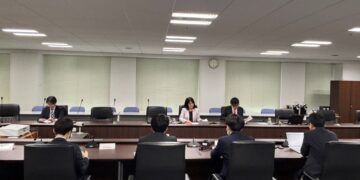The global energy crisis due to Russia’s invasion of Ukraine can speed up the transition to a more sustainable energy system and change the energy landscape for the coming decades, according to the IEA’s World Energy Outlook 2022. The crisis is a reminder of the unsustainability and fragility of the current global energy system, it warns.
The report found that higher shares of renewables correlated with lower electricity prices in the most affected regions.
Alongside short-term measures to protect consumers from the impacts of the crisis, many governments are now taking longer-term steps. Some seek to increase or diversify gas and oil supplies, and many want to accelerate structural changes. The most notable responses include the following:
- The US Inflation Reduction Act.
- The EU’s Fit for 55 packages and REPowerEU.
- Japan’s Green Transformation (GX) programme.
- Korea aims to increase its energy mix’s share of nuclear and renewables.
- Ambitious clean energy targets in India and China.
“Energy markets and policies have changed as a result of Russia’s invasion of Ukraine, not just for the time being, but for decades to come,” said IEA Executive Director Fatih Birol. “Even with today’s policy settings, the energy world is shifting dramatically before our eyes. Government responses around the world promise to make this a historic and definitive turning point towards a cleaner, more affordable and more secure energy system.”
Global clean energy investment will rise to more than $2 trillion annually by 2030, up 50% from current levels according to WEO’s Scenario, based on the prevailing worldwide policy settings – the Stated Policies Scenario. However, in the case of Net Zero Emissions by 2050, it would still need to be above USD 4 trillion by 2030.
Further, the share of fossil fuels in the global energy mix will fall from around 80% to just above 60% by 2050. As a result, global CO2 emissions will slowly fall from 37 billion tonnes per year to 32 billion tonnes by 2050. However, this would be associated with a rise of around 2.5 °C in global average temperatures by 2100, far from enough to avoid severe impacts related to climate change.
If maintained, present growth rates for deploying solar PV, wind, EVs and batteries would lead to a much faster transformation than projected in this scenario. If all announced solar PV manufacturing expansion plans see the light of day (Announced Pledges Scenario), manufacturing capacity will exceed the deployment levels in 2030 by around 75%. In the case of electrolysers for hydrogen production, the potential excess of the capacity of all announced projects is approximately 50%.
Furthermore, according to the report, more robust policies will be essential to drive the massive increase in energy investment needed to reduce the risks of future volatility and price spikes.
“It is essential to bring everyone on board, especially at a time when geopolitical fractures on energy and climate are all the more visible,” he said. “This means redoubling efforts to ensure that a broad coalition of countries has a stake in the new energy economy. The journey to a more secure and sustainable energy system may not be a smooth one. But today’s crisis makes it crystal clear why we need to press ahead.”
“Amid the major changes taking place, a new energy security paradigm is needed to ensure reliability and affordability while reducing emissions,” Dr Birol said. “That is why this year’s WEO provides 10 principles that can help guide policymakers through the period when declining fossil fuel and expanding clean energy systems co-exist, since both systems are required to function well during energy transitions to deliver the energy services needed by consumers. And as the world moves on from today’s energy crisis, it needs to avoid new vulnerabilities arising from high and volatile critical mineral prices or highly concentrated clean energy supply chains.”






